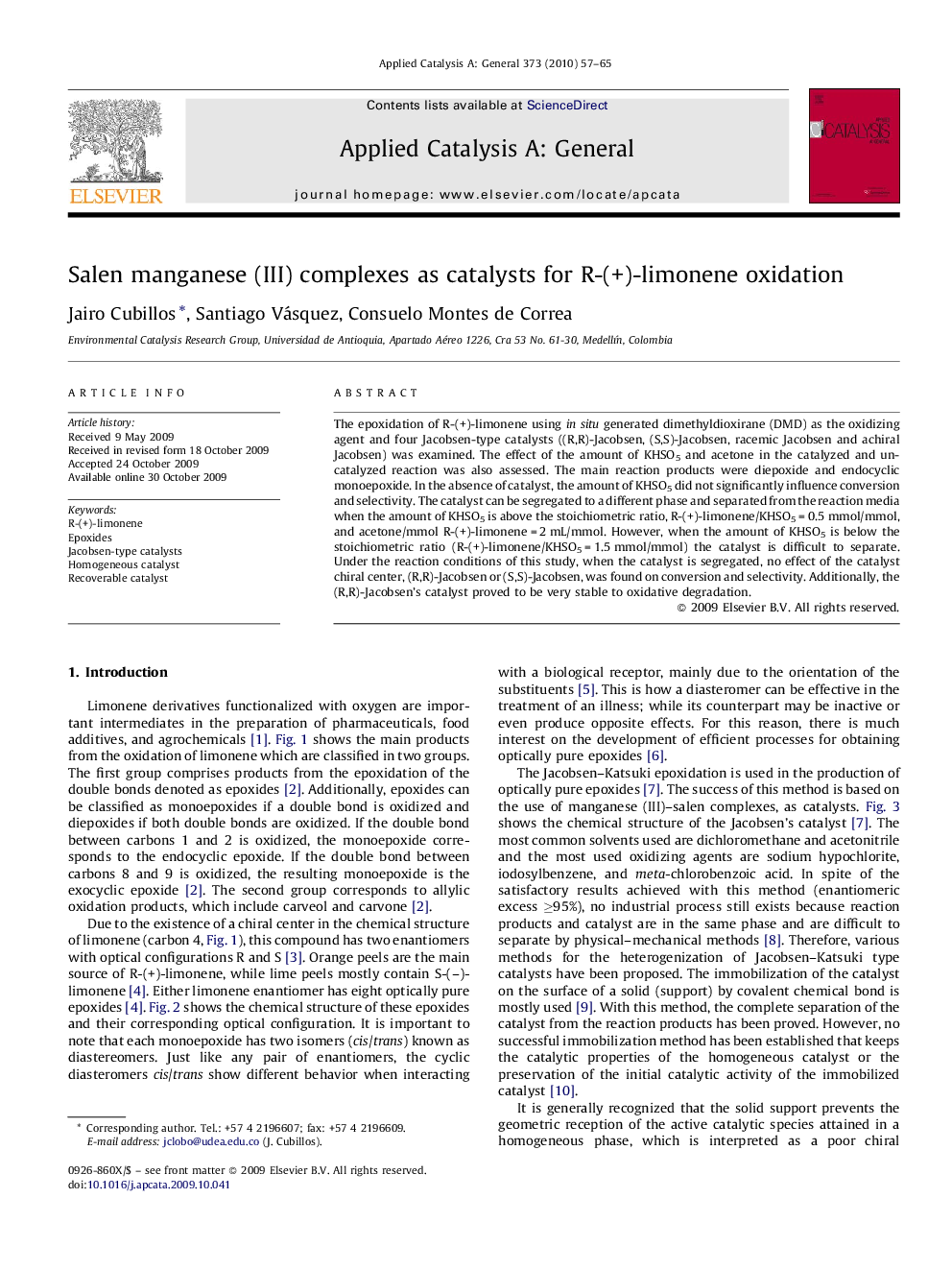| Article ID | Journal | Published Year | Pages | File Type |
|---|---|---|---|---|
| 42224 | Applied Catalysis A: General | 2010 | 9 Pages |
The epoxidation of R-(+)-limonene using in situ generated dimethyldioxirane (DMD) as the oxidizing agent and four Jacobsen-type catalysts ((R,R)-Jacobsen, (S,S)-Jacobsen, racemic Jacobsen and achiral Jacobsen) was examined. The effect of the amount of KHSO5 and acetone in the catalyzed and un-catalyzed reaction was also assessed. The main reaction products were diepoxide and endocyclic monoepoxide. In the absence of catalyst, the amount of KHSO5 did not significantly influence conversion and selectivity. The catalyst can be segregated to a different phase and separated from the reaction media when the amount of KHSO5 is above the stoichiometric ratio, R-(+)-limonene/KHSO5 = 0.5 mmol/mmol, and acetone/mmol R-(+)-limonene = 2 mL/mmol. However, when the amount of KHSO5 is below the stoichiometric ratio (R-(+)-limonene/KHSO5 = 1.5 mmol/mmol) the catalyst is difficult to separate. Under the reaction conditions of this study, when the catalyst is segregated, no effect of the catalyst chiral center, (R,R)-Jacobsen or (S,S)-Jacobsen, was found on conversion and selectivity. Additionally, the (R,R)-Jacobsen's catalyst proved to be very stable to oxidative degradation.
Graphical abstractThe epoxidation of R-(+)-limonene using in situ generated dimethyldioxirane (DMD) as the oxidizing agent and four Jacobsen-type catalysts ((R,R)-Jacobsen, (S,S)-Jacobsen, racemic Jacobsen and achiral Jacobsen) was studied. The main reaction products were diepoxide and endocyclic monoepoxide. The catalyst can be segregated to a different phase and separated from the reaction media when the amount of KHSO5 is above the stoichiometric ratio.Figure optionsDownload full-size imageDownload high-quality image (63 K)Download as PowerPoint slide
